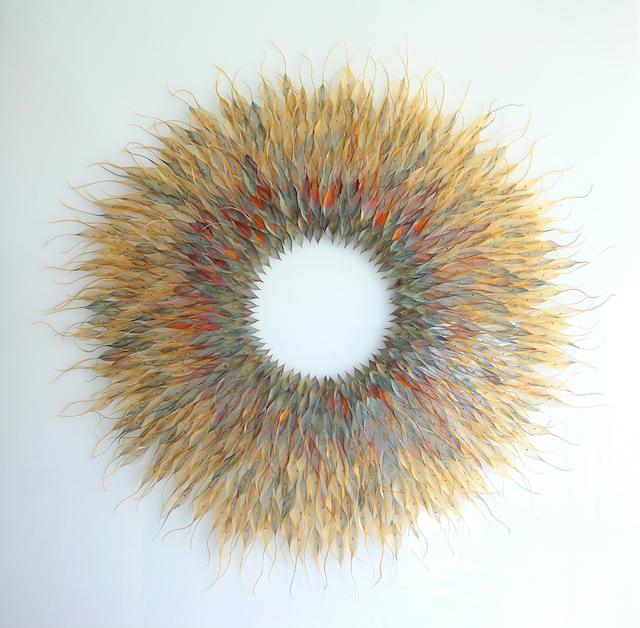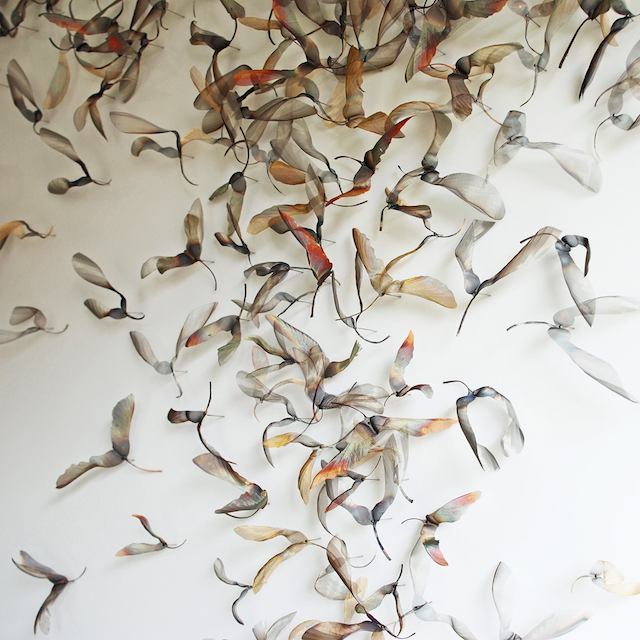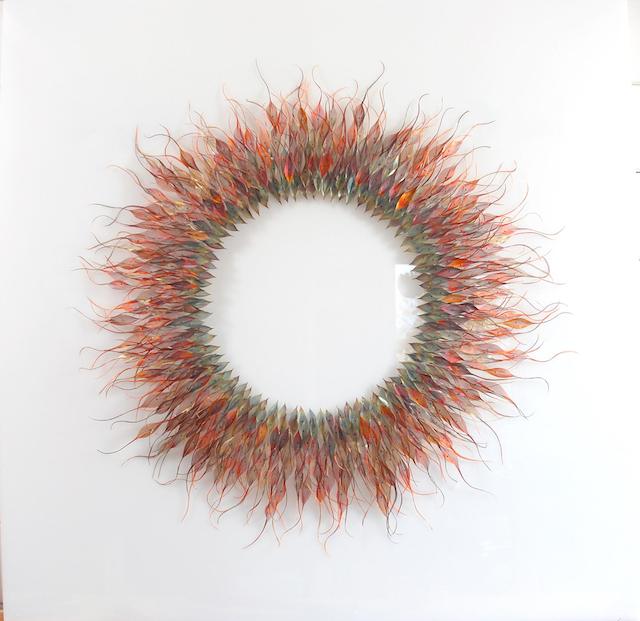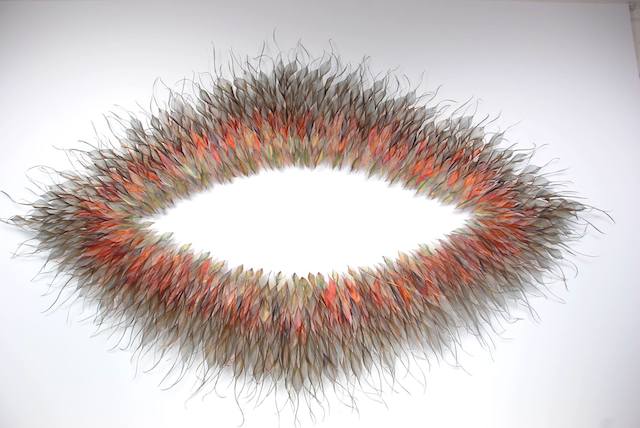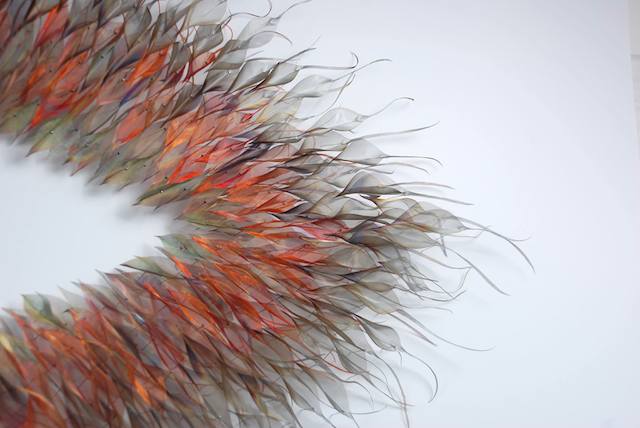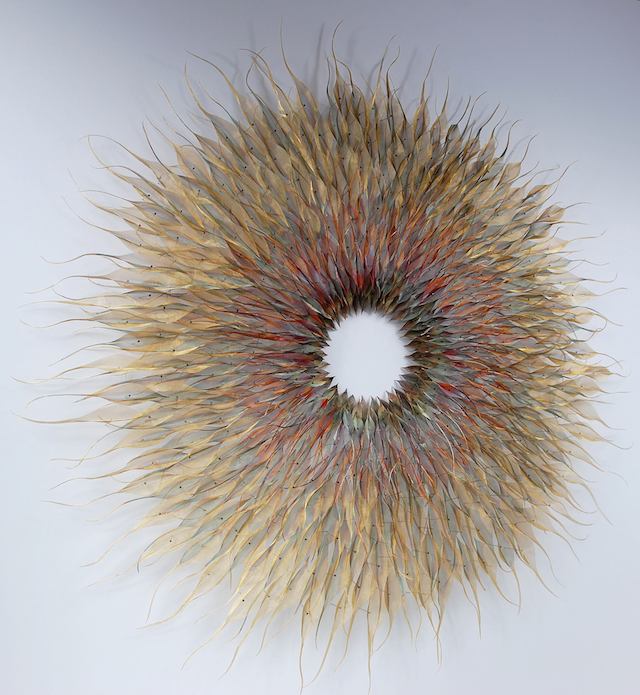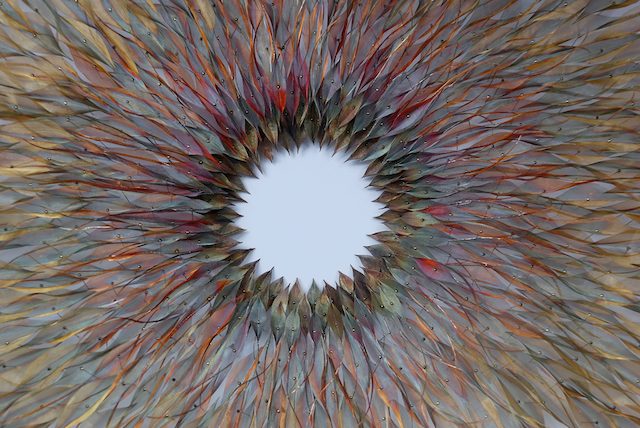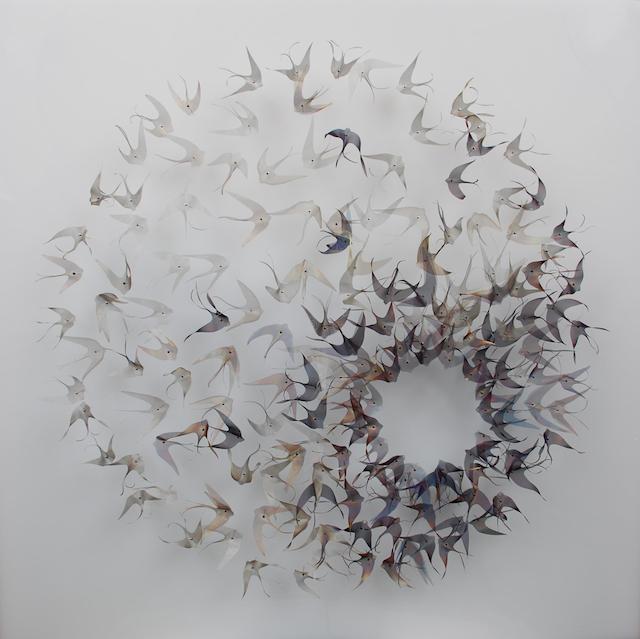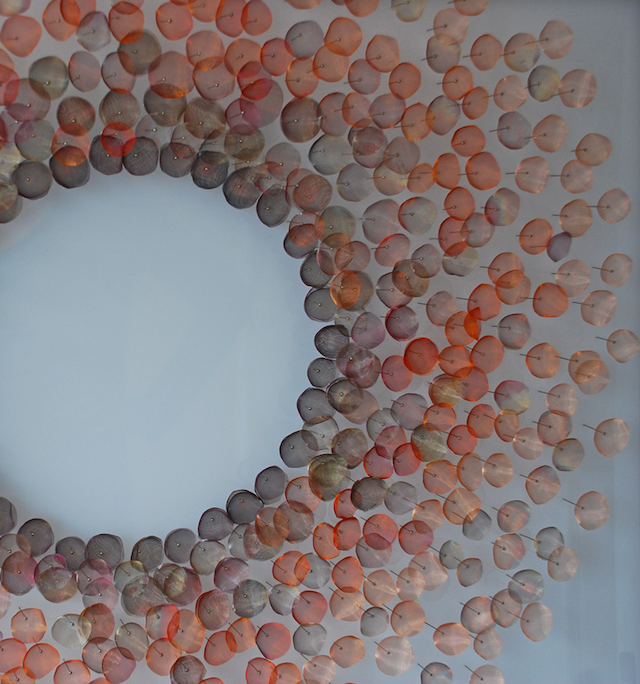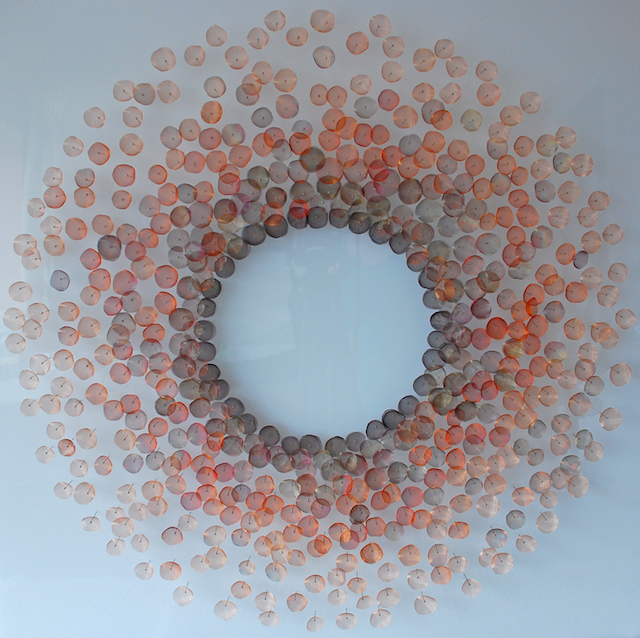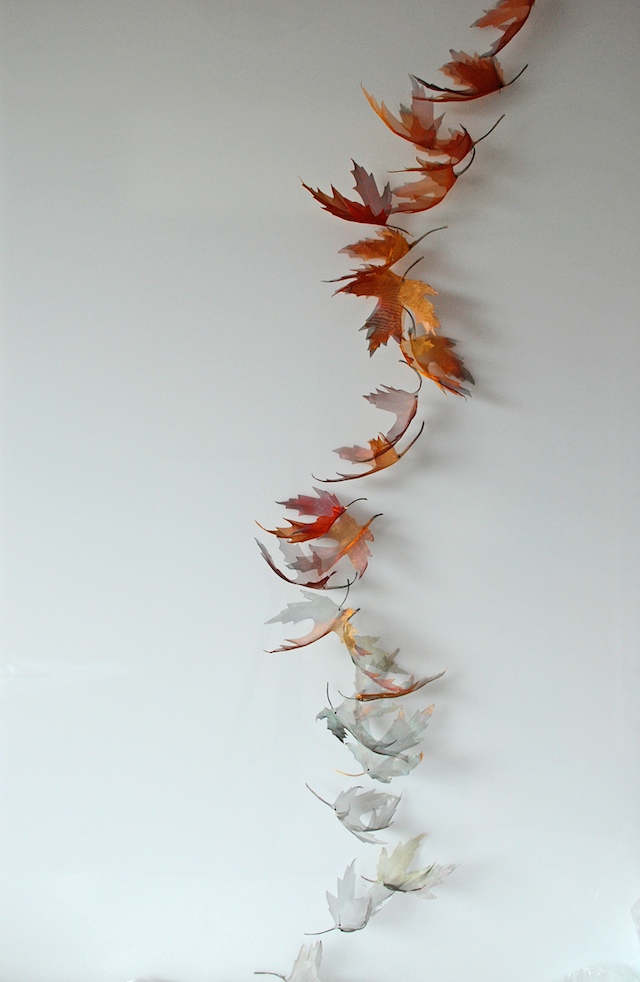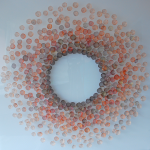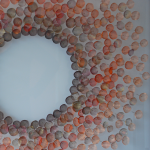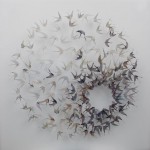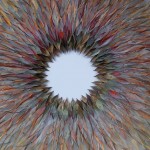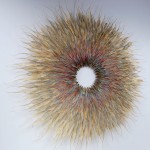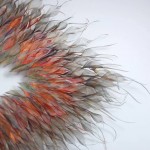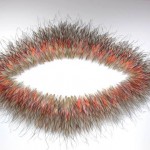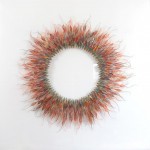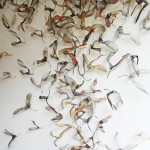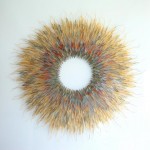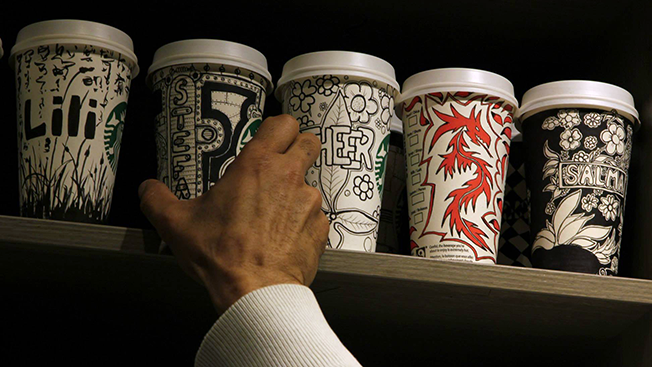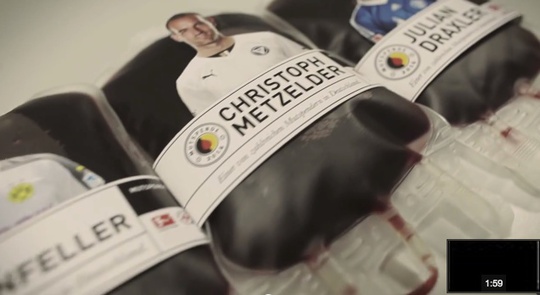The power of spontaneity.
From Adbusters #113: Blueprint for a New World, Part 2: Eco

In a famous story from ancient Chinese philosophy, Butcher Ding has been called upon to play his part in a traditional religious ceremony. The ritual, to consecrate a newly cast bronze bell, requires the butcher to sacrifice an ox in a public space, with the ruler and a large crowd looking on.
The still smoking bell is brought fresh from the foundry and cooled with the blood of the sacrificial animal — a procedure that demands precise timing and perfectly smooth execution. Butcher Ding is up to the task, dismembering the massive animal with effortless grace: “At every touch of his hand, every bending of his shoulder, every step of his feet, every thrust of his knee — swish! swoosh! He guided his blade along with a whoosh, and all was in perfect tune.” Ding’s body and blade move in such perfect harmony that a seemingly mundane task is turned into an artistic performance. When questioned later by Lord Wenhui, the village master, about his incredible skill, Butcher Ding explains, “What I, your humble servant, care about is the Way [Dao].” He then launches into an explanation of what it feels like to perform in such a state of perfect ease:
When I first began cutting up oxen, all I could see was the ox itself. After three years, I no longer saw the ox as a whole. And now, I meet it with my spirit and don’t look with my eyes. My senses and conscious awareness have shut down and my spiritual desires take me away. I follow the Heavenly pattern of the ox, thrusting into the big hollows, guiding the knife through the big openings, and adapting my motions to the fixed structure of the ox. In this way, I never touch the smallest ligament or tendon, much less a main joint.
The result is that Butcher Ding is not so much cutting up the ox as releasing its constituent parts, letting the razor-sharp edge of his cleaver move through the spaces between the bones and ligaments without encountering the slightest resistance.
Occasionally Butcher Ding’s effortless dance is interrupted when he senses trouble, at which point his conscious mind seems to re-engage a bit, though he still remains completely relaxed and open to the situation confronting him: “Whenever I come to a knot, I see the difficulty ahead, become careful and alert, focus my vision, slow my movements and move the blade with the greatest subtlety, so that the ox simply falls apart, like a clod of earth falling to the ground.” Lord Wenhui clearly sees something in this account that goes far beyond simply cutting up oxen. “Wonderful!” he exclaims. “From the words of Butcher Ding, I’ve learned how to live my life!”
This story of Butcher Ding comes from a book called the Zhuangzi, an important work of Daoist philosophy, and one that is principally concerned with a value known as wuwei, or effortless action. Wuwei literally translates as “no trying” or “no doing,” but it’s not at all about dull inaction. In fact, it refers to the dynamic, spontaneous and unselfconscious state of mind of a person who is active and optimally effective. For a person in wuwei, proper and effective conduct follows as automatically as the body gives in to the seductive rhythm of a song. This state of harmony is both complex and holistic, involving as it does the integration of the body, the emotions and the mind. Just as Butcher Ding’s blade remains razor-sharp because it never touches a bone or ligament — moving only through the gaps in between — the person who attains wuwei moves only through the open spaces in life, avoiding the difficulties that damage one’s spirit and wear out one’s body.
The preoccupation with how to cultivate wuwei was at the center of early Chinese controversies about how to attain the good life. Characterizations of wuwei in other early Daoist texts, such as the Laozi, take the form of concise, cryptic poems preoccupied with the “Way of Heaven.” The Laozian sage attains wuwei by simply relaxing into the “Way,” which is a sort of preexisting harmony with nature. The Daoist poems are characterized by an effortless ease that also plays a central role in early Confucianism. This may come as a surprise, because Confucianism is typically associated with hidebound traditionalism and stuffy ritual, which strike us as the opposite of wuwei. In the early stages of training, an aspiring Confucian gentleman needs to memorize entire shelves of archaic texts, learn the precise angle at which to bow and learn the exact length of the steps with which he is to enter a room. All of this rigor and restraint, however, is ultimately aimed at producing a cultivated, but nonetheless genuine, form of spontaneity.

We have all experienced this combination of effortlessness and effectiveness at some point in our lives. While we are completely absorbed in chopping and sautéing, a complex dinner assembles itself before our eyes. Fully relaxed, we breeze through an important job interview without even noticing how well it’s going.
Colloquially, we often speak of ourselves as if we were split in two: “I couldn’t make myself get out of bed this morning,” “I had to force myself to be calm,” “I had to hold my tongue.” Although we use such phrases all the time, if you think about them they’re a bit weird. Who is the self who doesn’t want to get out of bed, and what is its relationship to me? Does my tongue really have a will of its own, and how do I go about holding it? (And who am I if not my tongue?) Since there is always only one “me” involved, this split-self talk is clearly metaphorical rather than literal. Talk of split selves is certainly not limited to English: we can see it in many wuwei stories from early China that involve a narrative “I” confronting a part of the self that is more or less autonomous.
We can see our autonomous self in action when we walk. We don’t worry about how to walk, we don’t consciously monitor ourselves while we’re walking, we just walk. In fact, actually thinking about walking while trying to walk is a great way to trip. And walking is just one of many things our body knows how to do without any input from our conscious mind. When we reflect upon this, we get a strong sense of being split between a conscious “I” and an unconscious body, which often seems to have a mind of its own.
Although there is only one me, in an important functional sense we are divided into two beings. There is now general agreement that human thought is characterized by two distinct systems that have very different characteristics. The first and most important of these (tacit, hot cognition) is fast, automatic, effortless and mostly unconscious, corresponding roughly to what we think of as “the body” and what the Zhuangzi calls the “Heavenly mechanism.” The second (explicit, cold cognition) is slow, deliberate, effortful and conscious, corresponding roughly to our “mind” — that is, our conscious, verbal selves.
Although talk of “mind” and “body” is technically inaccurate, it does capture an important functional difference between these two modes of cognition. The goal of wuwei is to get these two selves working together smoothly and effectively. For a person in wuwei, the mind is embodied and the body is mindful. The result is an intelligent spontaneity that is perfectly calibrated to the environment. The ease perceived by observers of his performance mirrors Ding’s own internal experience, in which his “spiritual desires” take him away and the ox falls apart effortlessly.
Recall the stages of “seeing” that the butcher describes to his lord: “When I first began cutting up oxen, all I could see was the ox itself. After three years, I no longer saw the ox as a whole. And now — now I meet it with my spirit and don’t look with my eyes.” These lines describe how the act of “seeing” changes when different parts of the self are used to perceive. When Butcher Ding is a complete novice, all he can see is “the ox itself.” There he is, standing in front of this massive wall of hair and flesh, cleaver in hand, with no idea where to begin or what to expect once he makes the first cut.
After three years of practice, Butcher Ding reached a point where he “no longer sees the ox as a whole.” Drawing upon his training and analytic mind, Butcher Ding now perceives the ox in terms of its constituent parts, as a set of cuts that he can make, or a set of challenges to be traversed. Finally, Butcher Ding reaches a stage where, as he puts it, he no longer looks with his eyes: “My senses and conscious awareness have shut down,” he explains, “and my spiritual desires take me away.”

If an analogous legend were to be written today, the paragon of wuwei would no longer be a butcher, but a jazz musician. And thanks to the latest neuroscientific studies, we can now see how a brain on wuwei might function. Charles Limb and Allen Braun, for example, wanted to find out what was happening in the minds of professional jazz pianists in action. They designed a special, nonferromagnetic keyboard that could be taken inside the fMRI scanner. The researchers then had them play in two different conditions. In the first, “Scales,” they were required to play, over and over, a one-octave C scale. In the “Jazz Improv” condition, they were asked to remain in the same key but improvise a melody based upon a composition they’d previously memorized.
When the pianists switched into improvisation mode, the researchers were taken aback. In a spontaneous yet high-skill situation such as jazz improv, the conflict-detecting, vigilant part of the brain remained alert in the background even when the conscious-effort/control center was turned off, all while increased activity spread across relevant sensorimotor systems. This particular neural configuration may correspond subjectively to the kind of relaxed but attentive mode we enter into when we’re fully absorbed in a complex activity. In simpler words, the wuwei state appears to involve shutting down active conscious awareness and control while maintaining background situational alertness. When your conscious mind lets go, the body can take over.
The early Chinese ideal of wuwei involves just this sort of effortless action — and the body unleashed is indeed impressive to behold. After all, when Lord Wenhui sees Butcher Ding’s performance, he doesn’t thank him for teaching him to cut an ox, he declares that Ding has just taught him how to truly live his life. That’s the power of wuwei. We have all been taught to believe that the best way to achieve our goals is to reason about them carefully and strive consciously to reach them. But Butcher Ding’s story — and the science that’s beginning to back it up — show us that many desirable states are best pursued indirectly. Harnessing the power of spontaneity gives us a deeper understanding of how we can move through the world and interact with others effectively and with ease.
Edward Slingerland is a professor of Asian studies at the University of British Columbia. He is leading a global investigation into the evolutionary roots of religion and morality. Reprinted from his 2014 book TRYING NOT TO TRY, published by Crown Publishers, a division of Random House





